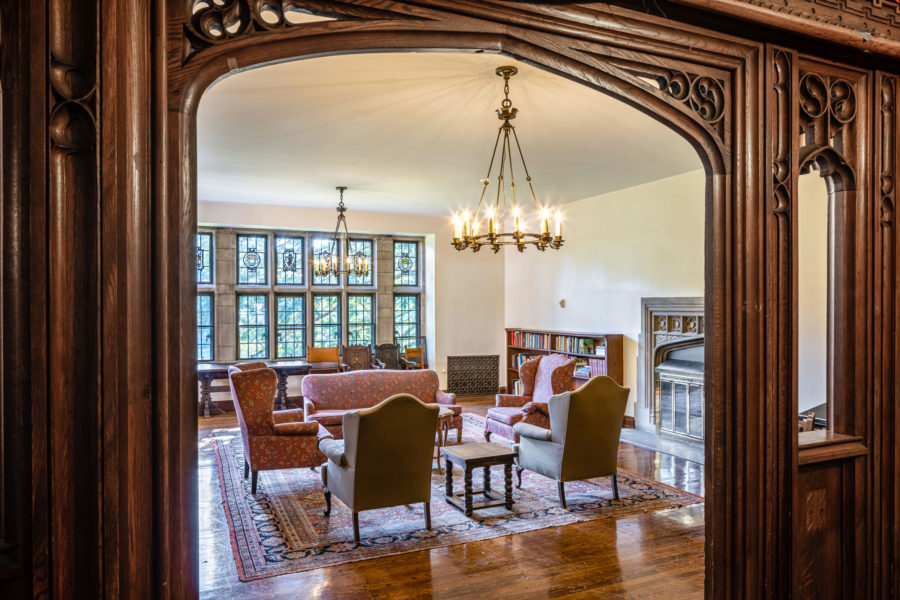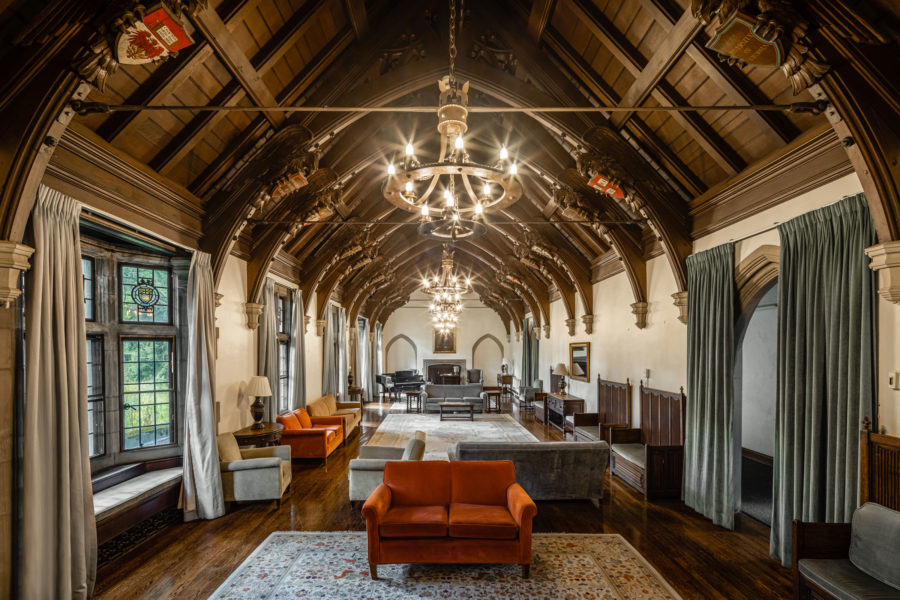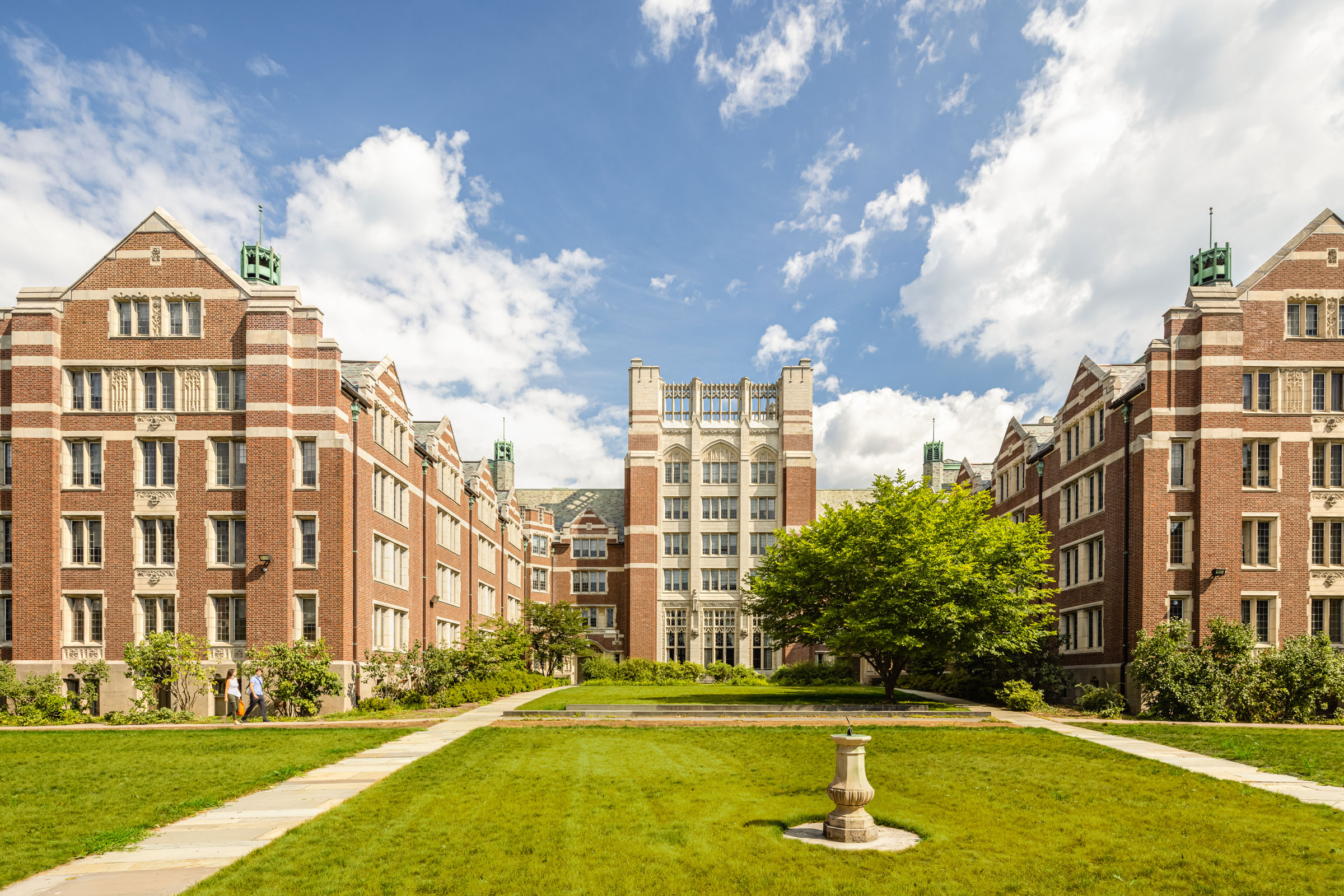Story at a glance:
- Finegold Alexander Architects tasked to work with engineers to improve educational buildings’ space heating systems.
- Campuses across the US have old buildings served by fossil fueled central plants that need to be reconsidered.
- These complex projects require deep engineering expertise and architects to achieve coherent, cost effective, and integrated building and campus level solutions to decarbonization.
It was the summer of 2019. Our firm, Finegold Alexander Architects, had been engaged by Wellesley College to complete a study of Severance Hall, one of their early 20th century residence halls, as a model of how they might complete significant deferred maintenance, infrastructure, and accessibility upgrades across their campus. Simultaneously, Wellesley was in the midst of an energy master plan whose purpose was to determine how they might meet their E2040 goals of reducing greenhouse gas emissions by 90% compared to 2010 levels.
A major contributor to GHG emissions on Wellesley’s campus, as at many other universities, are their buildings. The energy master plan looked at ways to reduce GHG emissions from space heating and cooling across the entire portfolio of buildings. The historic residence halls, including Severance, connect to the campus steam loop, and are heated either with steam or hot water radiators. Salas O’Brien (then MEP Associates) was the engineering firm selected for the master plan.
The Challenge
The major work of the master plan involves the conversion of the campus from a steam distribution loop to low temperature hot water. This changeover to low temperature water will support potential geothermal installations, gradually reducing energy input and therefore carbon emissions. The college requested we work with Salas to determine the best approach to building space heating systems in anticipation of this change.
Asking the Right Questions

Before image of Wellesley College’s Severance Hall. Photo by Raj Das Photography

Before image of Wellesley College’s Severance Hall. Photo by Raj Das Photography
We met at Finegold Alexander’s offices to review the scope of the master plan and the Severance study. The discussion became wide ranging, with Salas explaining the energy studies they were completing across multiple campuses to reduce and ultimately de-carbonize the energy infrastructure. Finegold Alexander asked many questions about the implications of this work for the architecture of the campus’ historic and existing buildings: Were the colleges considering envelope upgrades? What about potential code triggers when infrastructure work exceeds certain dollar values? Were there synergies to be found by addressing deferred maintenance at the same time as energy infrastructure? How can embodied carbon be measured at the same time as operational carbon in these plans?
The conversation about the Severance Hall study turned into a brainstorming session about how we might collaborate to offer colleges a comprehensive review of their energy and building infrastructures.
Amherst College
As a result of these conversations in the fall of 2019, we partnered with Salas O’Brien on their energy master plan work at Amherst College. Amherst College is a private college founded in 1821 in Amherst, Massachusetts. Their recently published climate action commitment states the college’s goal “to achieve climate neutrality by 2030 through transformative modernization of our energy system from fossil fuels to renewable electricity. By focusing on eliminating fossil fuel combustion, we will not have to rely on carbon offsets to meet our goal. In addition, we aim to go beyond just carbon neutrality on our own campus, inspiring graduates who will lead change on a much larger scale.”
As a part of the broader campus study, Finegold Alexander’s initial scope involved the envelope and architectural review of eight existing buildings (circa mid- 1800s to 2004), including gymnasium, library, academic, and residential buildings. Through onsite walkthroughs with campus facilities and review of existing conditions documentation, building envelopes were assessed for areas of energy loss and potential synergies of envelope upgrades that would complement the campus low temperature heating hot water conversion. A set of envelope Energy Conservation Measures (ECMs) were developed and evaluated for their energy savings and cost implications. A final report also noted potential construction ease or difficulty, as well as code or accessibility issues such upgrades might trigger.
Implementation
Based on the final recommendations in the feasibility report, the team moved into Phase I implementation. This has included significant engineering and early phase architectural work for the replacement of steam and high temperature hot water systems at 26 campus buildings, as well as schematic design for a new campus Energy Center.
Finegold Alexander’s work at the existing buildings ranged from detailing plaster or millwork where radiators in historic spaces require replacement as well as determining optimal pipe routing in other buildings to minimize unnecessary architectural work.
The purpose of the Energy Center is to house the mechanical equipment to support distribution of low temperature hot water and chilled water produced by the new campus geothermal system being designed by Salas O’Brien. In addition to concerns regarding operational carbon, in conversations with Amherst College, the Energy Center was planned as a low-embodied carbon structure, utilizing heavy timber construction with a green roof and only minimal finishes.
Looking Ahead
While the Energy Center will be part of later phases of the project, the schematic design enabled pricing for incorporation into future phase budgets. Finegold Alexander’s building assessments, design of a new campus Energy Center, and the ongoing work on the integration of new heating and cooling systems into existing buildings on campus, will help Amherst College achieve their ambitious goal of climate neutrality by 2030.
While our work at Amherst College continues, we are also near completion on construction documents for Wellesley College Severance Hall, where the scope includes the insertion of insulated interior partitions and storm windows at the building’s perimeter. These interventions improve envelope performance while meeting tight budgetary constraints and support the mounting of new, low temperature radiation units designed by Salas O’Brien.
Why It Matters
Many campuses across the country have historic and aging existing buildings served by fossil fueled central plants. To implement climate action plans with the goal of campus carbon neutrality, the energy inputs needed for space conditioning will require significant reduction. Once energy use is reduced, energy generation—be it from central plants or dispersed generation sources—must be converted to sustainable, renewable sources. The implementation of these projects is complex, requiring deep engineering expertise but also the involvement of architects to achieve coherent, cost effective, and integrated building and campus level solutions to decarbonization.
Finegold Alexander Architects, as a pioneer of the adaptive reuse movement, has deep expertise with existing and historic buildings. As signatories to the 2030 Challenge, we are also dedicated to reducing the carbon footprint of all our projects. The decarbonization work we are engaged in with engineers and campuses combine these two commitments. We are technical architects who understand thoughtful retrofits, skilled insertion of new systems into existing buildings, and integrating the work of envelope consultants and mechanical engineers is all design. This is design that will help universities and our society to achieve a zero-carbon future.



